| Santa Fe is the highest State capital in the US at
almost 6900ft. The town is much smaller than one would expect with a
population of only 65,000. And the architecture is quite different. | 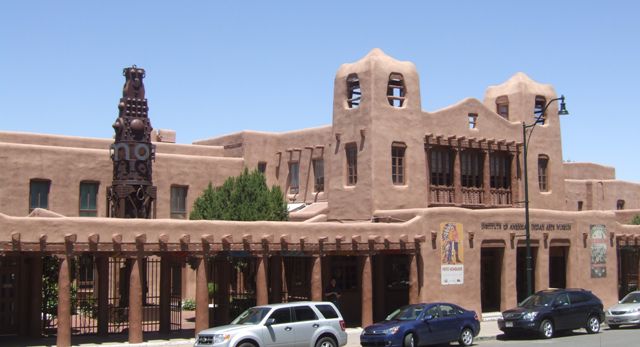 |
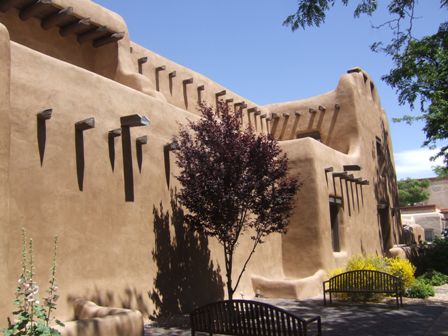 |
Most of the central buildings are in a mock adobe style with rounded corners
from the render and a common earth-red colouring. Most of the buildings seem
to house art galleries at least in some part. |
| The old cinema is quite unusual with a fine decorative
frieze along the top. Note also the life-size bronze burro standing on the
corner of Burro Alley. | 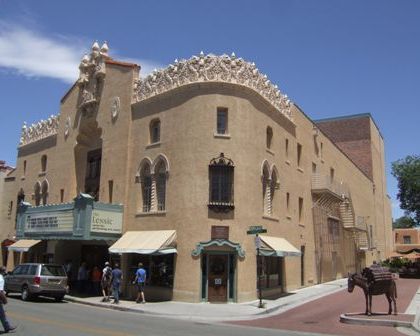 |
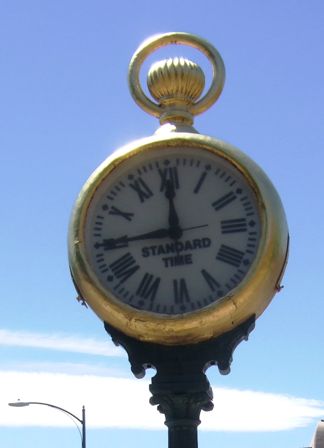 |
This is the Spitz clock which has been outside a jewellery store to
advertise its wares since 1881. It had no works until the turn of the
century. In 1915 it was knocked down by one of the first motor trucks. This,
the third clock, was purchased second hand in Kansas City by Salaomon Spitz
in 1916. It was moved to its current position in 1971. |
| Santa Fe is a very arty town with all sorts of weird
sculptures. These fish are in a local park. | 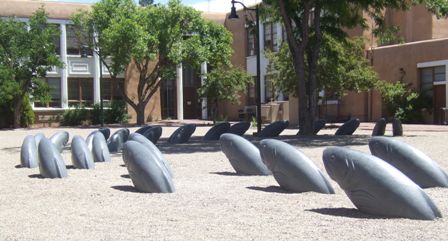 |
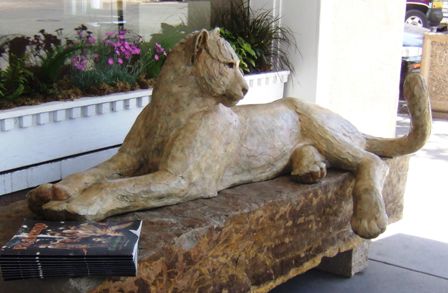 |
We almost fell over this wooden mountain lion (cougar), one of a pair
lounging outside an art gallery. |
| We peered into a sculpture garden (the Allan Houser
Art Park) and caught another mountain lion although I was not as struck by
this one. I'm not really an arty type. | 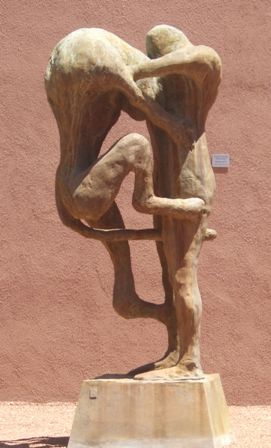 |
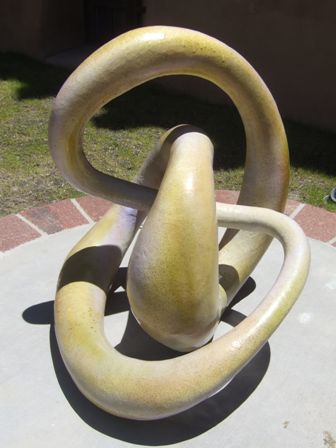 |
We stopped for a coffee at a stall inside a walled garden and found more art
shapes. I can appreciate the work which goes into designing these and
constructing them but I can't really get excited like some people do. This
is called Eos and was constructed by Stacey Neff in 2008 and is made from
blown glass, fibreglass and painted with car paint. |
| There is an arcade facing the central square which was
full of native American artists displaying their wares. You have to have
made the things you sell here. The building is the Palacio Real, built in
1610 by the Spanish crown, it was the seat of government and the residence
of over a hundred Governors and Captains General over the following 300
years. It is the oldest public building in the US. | 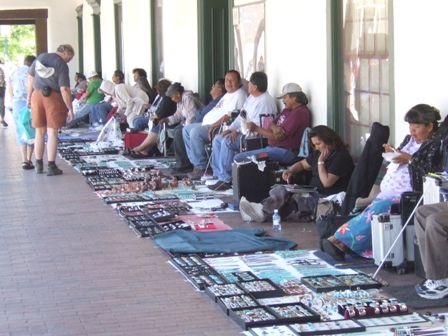 |
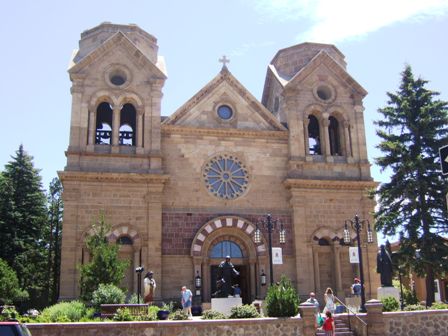 |
This is the Basilica St Francis Assisi. The original adobe church was built
in 1610, rebuilt in 1630 and 1714. Only a part of the original chapel
remains. The current church was built between 1869 and 1887 around the old
one which was then demolished and removed through the front door. The most
recent structural renewal was in 1967 when an additional chapel was added.
It became a basilica in 2005. |
| Kateri Tekakwitha (1656-80) was the first North
American Indian to be promoted a saint. | 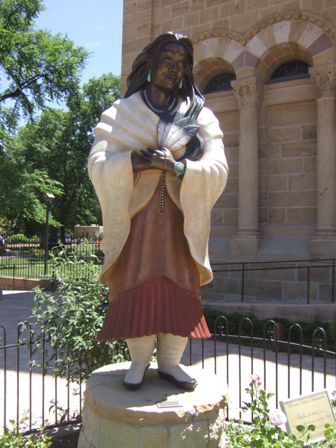 |
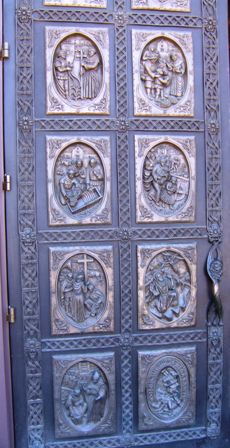 |
The doors with their bronze panels are a work of art in their own right.
This is a very wealthy church with many stained glass windows. It is very light
inside but seems a lot more modern than most of the churches we have visited
recently. Most of the stained glass is French in origin. | 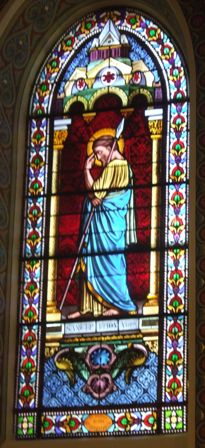 |
| Baptismal fonts are normally set off to one side at
the entrance to the church. This one is right in the middle of the central
aisle. | 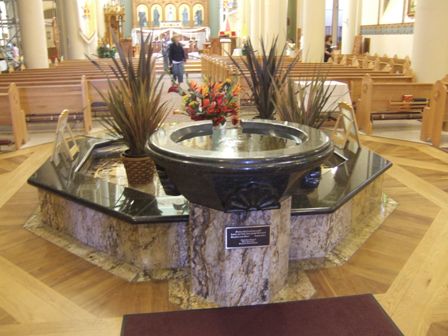 |
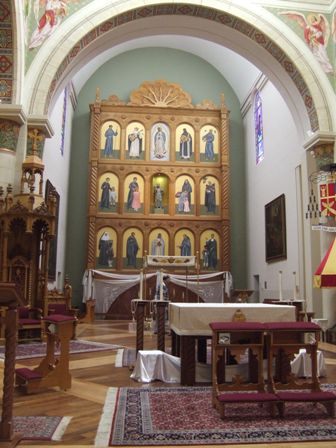 |
The main altar is not as ornate as most but has smaller statues depicting
saints of North and South America, inset into niches over the whole end wall
of the nave. This is a recent addition dating from 1987. Eleven archbishops
are buried here. |
| The chapel to one side (Chapel of La Conquistadora -
Our Lady of Peace) contains a statue brought to Santa Fe in 1625. The statue
is the oldest representation of the Virgin in the US. The chapel was rebuilt
in 1714. | 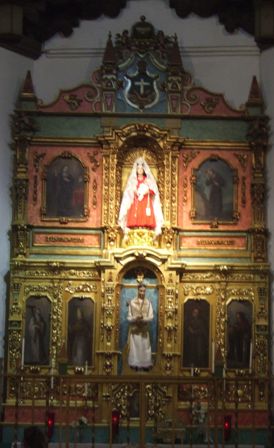 |
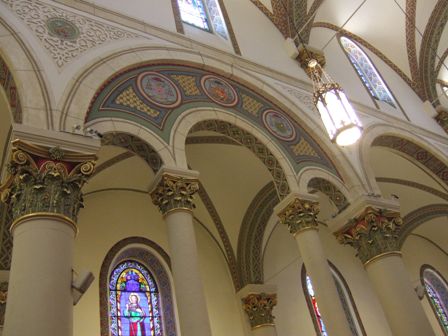 |
There is a lot of very fine constructional detail with gilded and painted
plaster sections. From the scaffolding down one side of the nave, I guess
this decoration is recent and ongoing. |
| We have visited the capitol buildings in several
states now so we had to visit this one. There is actually a large complex of
low rise government buildings so finding an obvious central building proved
difficult. New Mexico has only been a state since 1915. This is in the foyer
of the South Capitol Building and he wasn't going to be much help. We found
no guards or guides at all although there were other visitors around. | 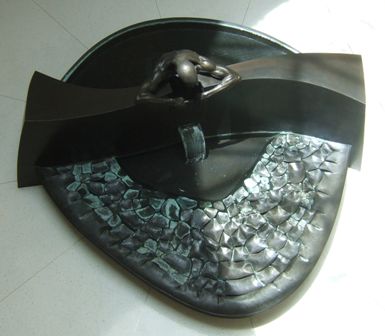 |
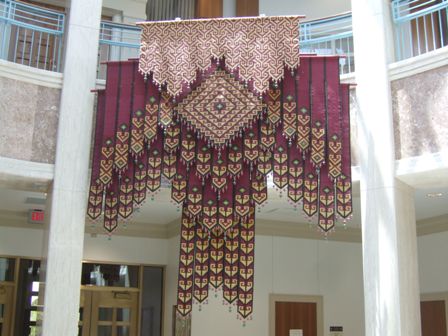 |
This hanging is called Guardian Spirit (Ave Teo) and was designed by Hector
Jara and woven in collaboration with Zapoteca weavers from Oaxaca, Mexico. |
| We found a passageway which houses the Capitol art
collection and wandered along its gentle curve. | 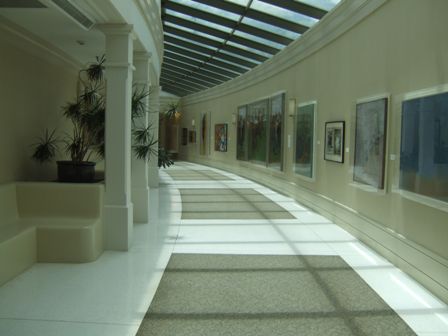 |
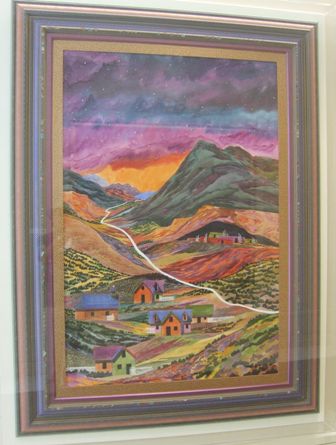 |
Most of the paintings are behind glass and the windows opposite create
reflections which make some quite hard to see in the bright sunlight. Most I
couldn't make sense of. This is getting a bit closer to something
recognisable - I know, I'm a heathen! |
| "A Reference Volume" by Melissa Zink (2002)
Sometimes something catches our fancy, and usually we are both attracted
to the same things. We both stopped and took a picture of this one but don't
ask me to define the attraction. | 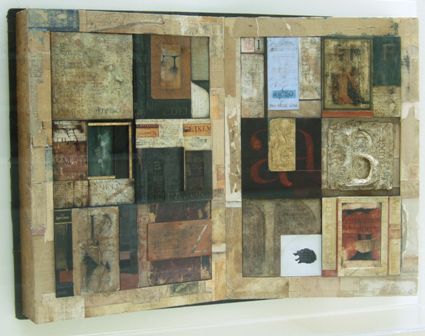 |
|